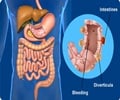Students living in rural counties are 1.25 times more likely to be obese than city-dwellers.

‘The socioeconomic and racial composition of a school affects the likelihood of children being obese.’





Overall, 20 percent of the students in the study were obese, a somewhat higher rate than among their peers nationally. However, students living in a rural county were 1.25 times more likely to be obese than their urban counterparts, even when researchers accounted for the county's socioeconomic and racial composition. Obesity was defined as having a Body Mass Index at or above the 95th percentile for students of the same age and sex. "There are a lot of unique features in rural areas that could lead to higher levels of obesity," said Joy Piontak, a research analyst at Duke University's Center for Child and Family Policy who co-authored the article with Michael D. Schulman, a professor at N.C. State University. "Food insecurity, poverty, the inability to recover from economic recession or a lack of access to grocers could all potentially affect obesity rates."
Researchers also found that a student who attends a high-poverty school is 1.5 times more likely to be obese than a student attending a low-poverty school. Higher rates of obesity were also found in schools with a high minority population. However, once researchers took into account whether the schools had high levels of poverty, it became clear that poverty, not race, was driving the outcome.
The researchers said public school initiatives could hold the key to lowering obesity rates in both rural areas and schools with higher rates of poverty.
"We should look at interventions in schools and not just target individual kids," Piontak said. "We can teach a kid how to eat better or exercise more, but if we know that particular schools or places are more likely to have higher rates of obesity, we can look at the food or the types of physical education opportunities available there."
Advertisement
Source-Eurekalert














